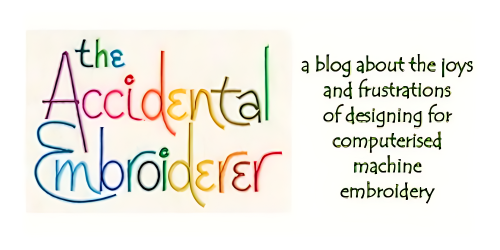Sunflowers and a bird
Life has been busy recently and I’ve been spending most of my time making cards and embroideries for the upcoming Christmas fairs in the neighbourhood. But I haven’t done many new designs, so there hasn’t been much to post here. However Cherri has come to the rescue with a design that I did at her request some time ago. She wanted something cheerful to frame and put in her bathroom, and because sunflowers are about the most cheerful flowers I can think of, I drew and digitised a large, complex bunch of sunflowers done in applique and embroidery. But Cherri loves birds as much as I do and said that the flowers needed something in the way of a bird to liven up the picture. So, as I never object to adding birds to anything, I put in a bird. I really love the way she’s stitched out the flowers with the bird extending out of the frame to make it look like an accidental spectator that just flew in
